Key takeaways
- The Serverless Framework simplifies cloud function management, allowing developers to focus more on coding rather than infrastructure.
- Automatic scaling and cost efficiency are significant benefits, reducing cloud expenses by charging only for the execution time of functions.
- Clear error messages and real-time feedback during deployment help catch issues early, streamlining the development process.
- Best practices include keeping configurations organized, utilizing version control, and thoroughly testing in isolated environments before production deployment.
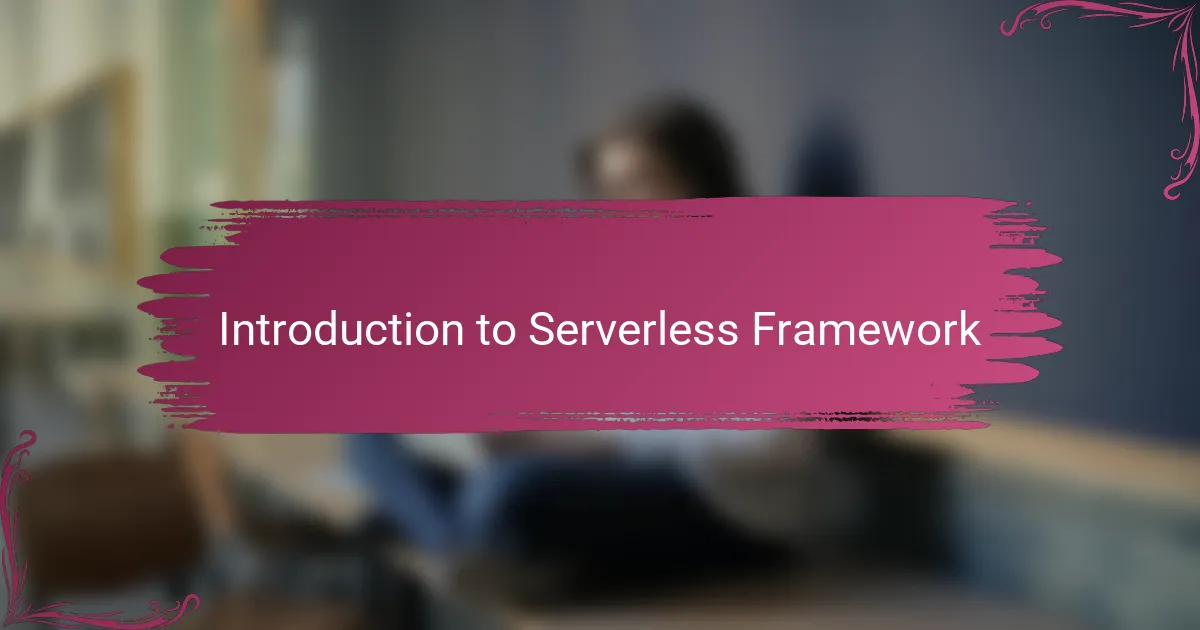
Introduction to Serverless Framework
The Serverless Framework completely changed the way I handle deployments. At first, I was skeptical—how could managing cloud functions get any simpler? But soon enough, it became clear that this tool strips away so much complexity, letting me focus on writing code instead of wrestling with infrastructure.
What draws me to Serverless Framework is its seamless integration with multiple cloud providers. It felt like gaining a superpower, able to deploy applications across AWS, Azure, or Google Cloud without learning each platform’s intricate setup. Have you ever wished deployment could just be one unified process? That’s precisely what Serverless delivers.
Using Serverless Framework, I found a new sense of control and confidence in my projects. No longer was I stuck in endless configuration files or facing cryptic errors during deployment. This framework’s simplicity made me feel empowered, as if I had finally tamed the beast of cloud infrastructure.
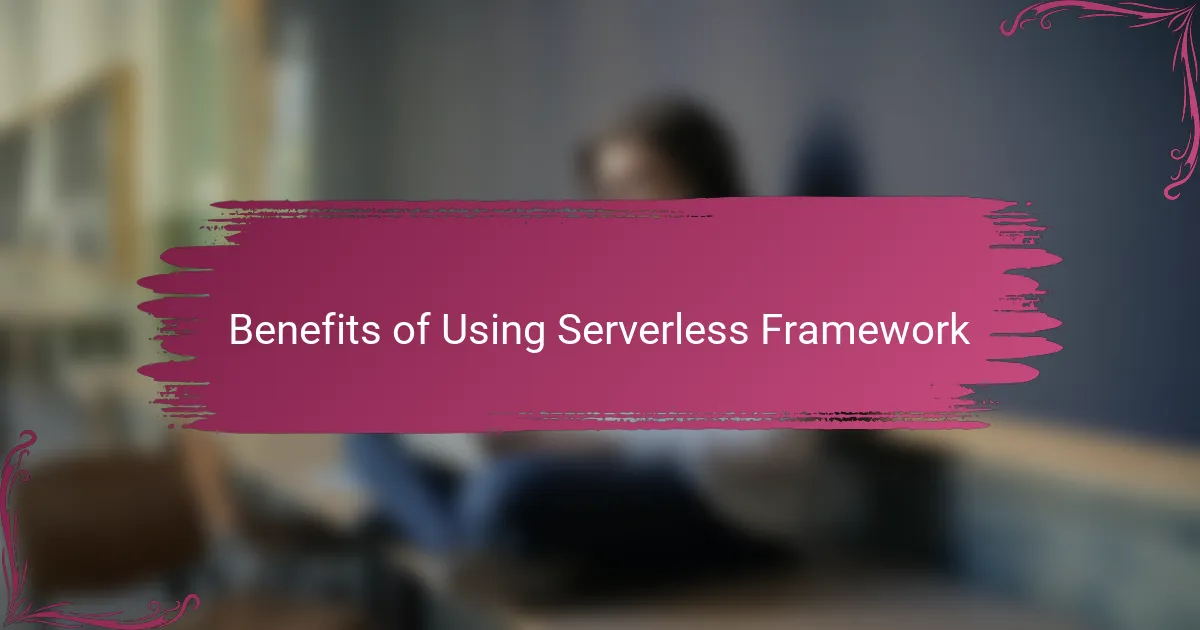
Benefits of Using Serverless Framework
What really struck me about the Serverless Framework is how it handles scaling effortlessly. Do you remember the headache of manually adjusting resources as traffic spikes? With Serverless, scaling happens automatically, so I can relax knowing my app won’t buckle under pressure.
Another benefit that surprised me was the cost efficiency. Since you only pay for the actual execution time of your functions, I noticed my cloud expenses shrinking significantly. Isn’t it satisfying to use tools that not only save your time but also your budget?
I also appreciate how the framework encourages clean, modular code structures. Breaking down complex applications into smaller, manageable functions felt liberating—it made debugging and updates so much less painful. Have you ever faced a deployment where a tiny change felt like battling a monster? Serverless flips that experience on its head.
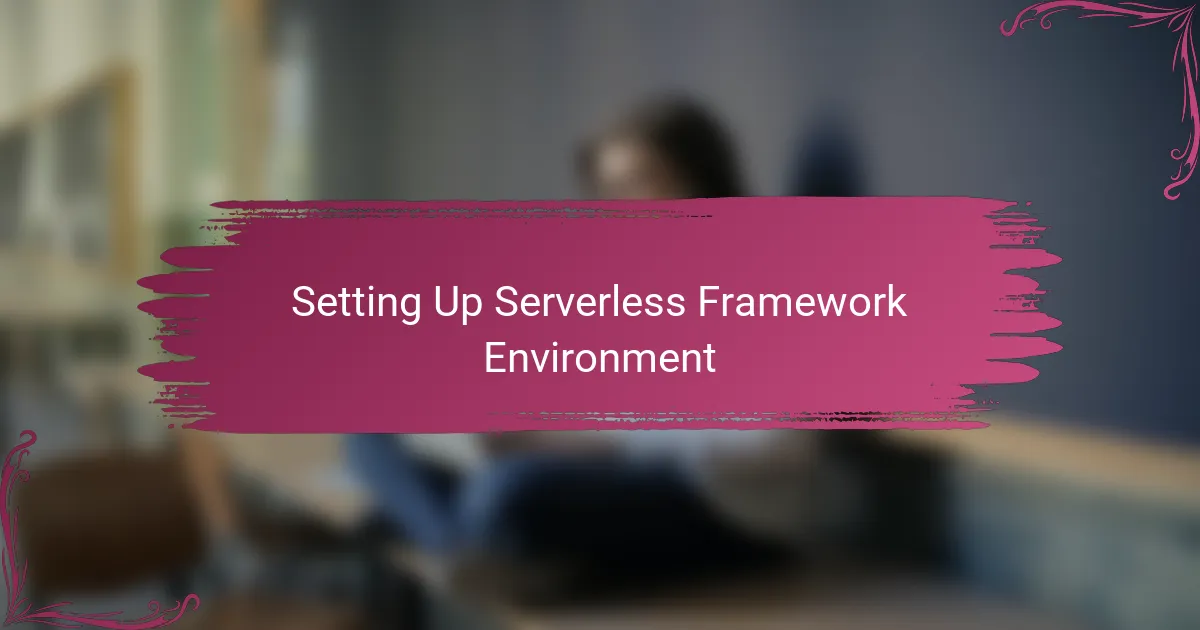
Setting Up Serverless Framework Environment
Setting up the Serverless Framework environment was surprisingly straightforward for me. I started by installing the framework globally using npm, which felt familiar since I work a lot with Node.js. Have you ever had to wrestle with complicated SDK installations? This was refreshingly smooth.
Next, I configured my AWS credentials—a step that initially seemed intimidating. But once I set up my IAM user with the right permissions, the framework instantly connected without any fuss. That moment when your environment clicks into place? It’s genuinely rewarding.
Finally, creating my first serverless.yml file was like writing a blueprint for my app’s deployment. Defining functions, events, and resources in one place made everything feel organized and tangible. For me, this step transformed vague deployment anxiety into clear, confident action.
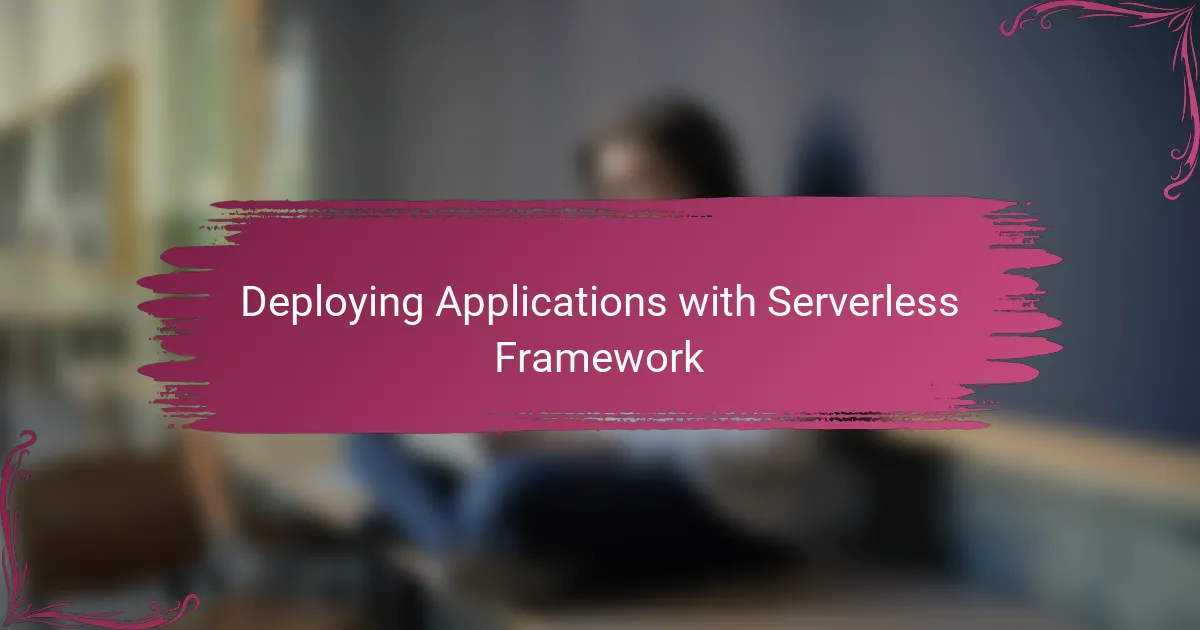
Deploying Applications with Serverless Framework
When I first deployed an application using the Serverless Framework, I was amazed by how it abstracted away all the manual steps I used to dread. Instead of juggling multiple scripts or worrying about AWS Lambda setup, I simply defined my functions and triggers in the serverless.yml file and hit deploy—it felt almost magical to watch everything spin up so quickly. Have you ever experienced that satisfying moment when a complex task suddenly becomes effortless? That’s exactly how deployment feels with this tool.
What’s more, Serverless Framework provides real-time feedback during deployment that helped me catch errors early, saving me from hours of troubleshooting later. I remember one time when a misconfigured event source almost broke my app, but the framework’s clear error messages guided me straight to the fix. It’s like having a savvy assistant looking over your shoulder.
One thing that truly stands out is how the framework automates creating the necessary cloud infrastructure. Instead of manually configuring APIs, roles, and permissions, Serverless generates all of that behind the scenes based on my configuration. This automation gave me so much peace of mind, knowing that everything was deployed consistently and securely—wouldn’t you agree that this kind of reliability makes your life as a developer so much easier?

Common Challenges and Solutions
Even with the Serverless Framework’s many advantages, I ran into some bumps along the way. One challenge was dealing with deployment errors that sometimes felt cryptic. It took me a bit of digging to realize that most issues stemmed from typos or misconfigurations in the serverless.yml file—once I tightened up my attention to detail, the errors became far less intimidating.
I also noticed that managing environment variables across different stages required careful planning. At first, mixing development and production settings caused unexpected behavior, which was frustrating. But adopting a consistent naming convention and leveraging Serverless Framework’s stage variables turned this chaos into a smooth, predictable process.
Another tricky spot came with debugging deployed functions, especially since I was often working remotely from the cloud environment. My breakthrough was integrating logging with CloudWatch and using local emulation tools to catch issues early. Have you tried simulating your functions locally? It’s a game-changer that saved me a lot of guesswork and stress.

Personal Deployment Experience
Deploying my first project with the Serverless Framework was a mix of excitement and nervousness. I remember staring at the console, waiting for the deployment to finish, wondering if I had missed a crucial step. When it completed successfully on the first try, I felt a rush of accomplishment that made the entire setup effort worthwhile.
Sometimes, deployments didn’t go as smoothly, and those moments tested my patience. But each error message felt like a puzzle, and solving it deepened my understanding of both the framework and cloud services. Have you ever had that moment when frustration flips into a learning opportunity? That’s exactly what happened to me.
What surprised me most was how quickly I gained confidence over time. The repetitive process of tweaking configurations and redeploying became less daunting. It’s empowering to see how a tool can turn what once seemed complex and intimidating into a manageable, even enjoyable, routine. Wouldn’t you agree that confidence is half the battle in deploying applications?
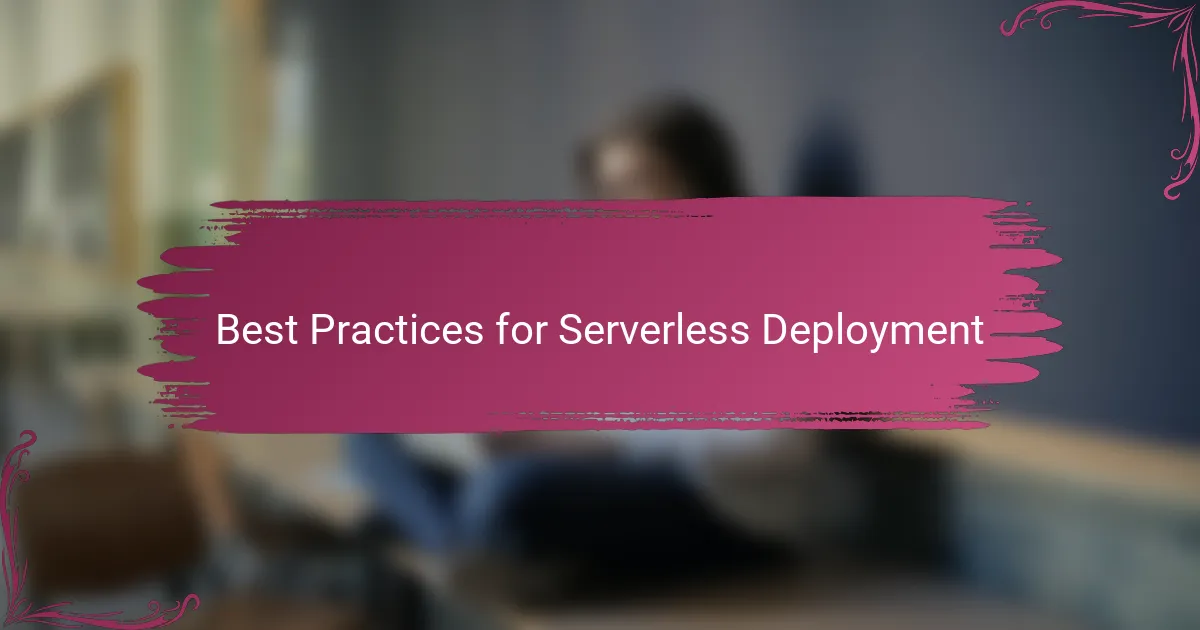
Best Practices for Serverless Deployment
One of the best practices I learned early on is to keep your serverless.yml file clean and well-organized. I used to make it a dumping ground for every little configuration, which quickly became overwhelming. Have you ever opened a config file and felt lost? Streamlining your declarations not only saves headaches but speeds up deployment.
Another thing I swear by is version control for your infrastructure code. Treating your serverless configuration like application code means you can track changes, roll back when things go wrong, and collaborate more effectively. When I started doing this, it felt like I finally gained control over my deployment chaos.
Lastly, I always recommend thorough testing in isolated stages before hitting production. It’s tempting to deploy directly, but trusting each environment with its own variables and resources saved me from costly downtime. Have you ever wished you had a safety net? That’s exactly what staging environments provided me—peace of mind with every release.